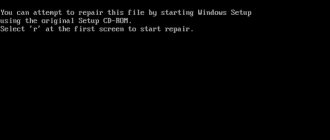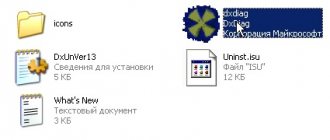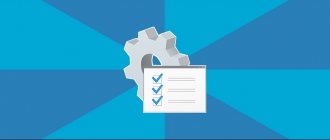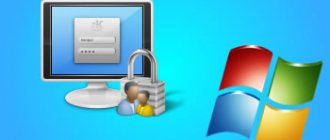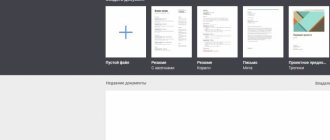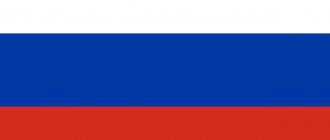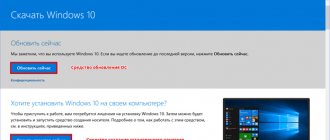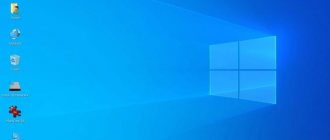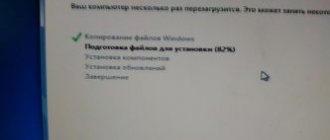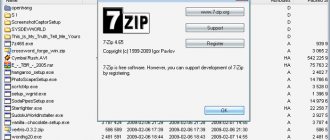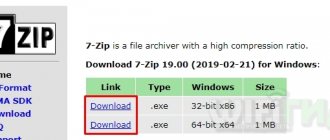How to open a dll file for editing
Regardless of whether the concept is part of an application program or part of MS systems, a common question is how to open a dll file for editing.
It is worth knowing that it implements a number of software functions. From connecting to external devices and working with a hard drive to using it in cross-platform applications.
Note : Therefore, any changes in its structure may lead to operating system errors.
But, if you want to get acquainted with the source code, you will need a special editor for system resources Resource Hacker (ResHacker). It allows you to extract and modify the code as you wish (Figure 2).
Figure 2. Resource Hacker application interface for opening .dll files
Step-by-step instruction
So, how do you open a dll file for modification?
- Launch ResHacker.
- To read in the original format, select File>Open in the top panel.
- Directives with the openable objects they contain will be shown on the left.
- The center of the utility contains codes that can be changed and saved.
- To compile, use the Compile Script button.
- To save, use the File>Save command.
WINDOW.DLL: How to fix “File not found” errors
Sometimes WINDOW.DLL and other DLL system errors can be related to problems in the Windows registry. Several programs can use the WINDOW.DLL file, but when those programs are uninstalled or modified, sometimes "orphaned" (invalid) DLL registry entries are left behind.Basically, this means that while the actual path of the file may have changed, its incorrect former location is still recorded in the Windows Registry. When Windows tries to look up these incorrect file references (file locations on your PC), WINDOW.DLL errors can occur. Additionally, a malware infection may have corrupted registry entries associated with Microsoft Flight Simulator. Thus, these corrupted DLL registry entries need to be fixed to fix the problem at the root.
Manually editing the Windows registry to remove invalid WINDOW.DLL keys is not recommended unless you are PC service professional. Mistakes made when editing the registry can render your PC inoperable and cause irreparable damage to your operating system. In fact, even one comma placed in the wrong place can prevent your computer from booting!
Due to this risk, to simplify the process, it is recommended to use a program to clean the OS registry. A registry cleaner automates the process of finding invalid registry entries, missing file references (like the one causing your WINDOW.DLL error), and broken links in the registry. Before each scan, a backup is automatically created with the ability to undo any changes with one click, protecting against the possibility of damaging your PC.
As a Microsoft Silver Partner, we provide software to help you resolve the following issues:
- WinThruster OS registry cleaner [download]
Warning: Unless you are an experienced PC user, we DO NOT recommend manually editing the Windows Registry. Using Registry Editor incorrectly may cause serious problems that may require you to reinstall Windows. We do not guarantee that problems resulting from incorrect use of Registry Editor can be corrected. You use Registry Editor at your own risk.
Before you manually repair the Windows registry, you need to create a backup by exporting a portion of the registry associated with WINDOW.DLL (eg. Microsoft Flight Simulator):
- Click on the Start .
- Type " command " in the search bar... DON'T PRESS ENTER YET !
- CTRL-Shift keys on your keyboard, press ENTER .
- A dialog box for access will be displayed.
- Click Yes .
- The black box opens with a blinking cursor.
- Type " regedit " and press ENTER .
- In the Registry Editor, select the WINDOW.DLL-related key (eg. Microsoft Flight Simulator) you want to back up.
- From the File , select Export .
- From the Save in , select the folder where you want to save the backup copy of your Microsoft Flight Simulator key.
- In the File Name , enter a name for the backup file, for example, “Microsoft Flight Simulator backup.”
- Make sure that the Export Range is set Selected Branch .
- Click Save .
- The file will be saved with the extension .reg .
- You now have a backup of your WINDOW.DLL-related registry entry.
The following steps for manually editing the registry will not be described in this article, as they are likely to damage your system. If you would like more information about editing the registry manually, please check out the links below.
We do not accept any responsibility for the results of the actions performed according to the instructions below - you perform these tasks at your own risk.
Windows XP https://www.theeldergeek.com/windows_xp_registry.htm
Windows 7 https://www.theeldergeek.com/windows_7/registry_edits_for_win7.htm
Windows Vista https://support.microsoft.com/kb/2688326 - LetMeFixItMyselfAlways
Open dll file online
If you are dealing with a web page, then you will need to open this dll file online. It contains server scripts responsible for generating HTML. For example, VB or Perl.
Pages are hosted on Microsoft IIS servers. To process them, correct settings are required. They can be read in any browser you use - Internet Explorer, Mozilla Firefox, Opera or Google Chrome.
How to open dll file windows 10
If these are library elements that are located in the system folder, then they are intended to run applications created using Visual C++.
Therefore, to open them on the same windows10 you will need the appropriate software from MS - Visual Studio or VisualFoxPro (Figure 3).
Figure 3. Visual example of an open .dll file in the Visual Studio application on Windows 10
Also, the “dll” must be opened by a program that uses its library.
Rundll32 usage example
To launch the rundll32 program, use the following command line syntax:
rundll32.exe
As an example, I propose to analyze the command to launch the “Regional and Language Options” applet in the Control Panel, “Formats” tab:
rundll32.exe shell32.dll,Control_RunDLL intl.cpl,,0
When executing this command, the rundll32 utility will call the Control_RunDLL function located in the shell32.dll library and pass the following parameters to it:
| Parameter | Description |
| hWnd | The identifier (handle) of the parent window, which is typically used when creating windows in loadable DLL functions. |
| hInstance | The handle (instance title) of the selected DLL. Otherwise, the starting address of the DLL process in the address space. In our case, the shell32.dll libraries. |
| lpCmdLine | The command line passed to the library. That is, parameters passed to the library itself. In our case intl.cpl,,0; |
| nCmdShow | Display mode of windows of the selected library. (data passed to the CreateProcess function). |
Now let's note some requirements for rundll32 syntax:
- The parameter describing the entry point of the called function (EntryPoint) is case sensitive. This means that the value of Control_RunDLL is not the same as control_rundll. Quite often, incorrectly specifying the case of the characters of the called function leads to errors in the failure to detect the latter.
- The function (in the example above, the Control_RunDLL function) must independently parse the command line and identify its individual arguments.
- The rundll/rundll32 utilities look for the specified DLL in standard locations.
In 64-bit versions of Windows (starting with Vista), system libraries are located in three directories: %WinDir%\System32, %WinDir%\SysWOW64 and %WinDir%\WinSxS. Moreover, the latter is used by the component model (Side-by-Side).In our example, the shell32.dll library is located along a path known in the %PATH% variable, so we indicate it in abbreviated form. To be sure that exactly the DLL we are interested in will be loaded, it is recommended to specify the full path to the library file. Otherwise, a situation may arise when the system may contain a library of the same name located in a standard location (for example, along the paths defined by %PATH%), and the one that you want to use is located on a path unknown to the system, in this case, by the rundll32 utility The first library will be called.
- must not contain invalid characters: spaces, commas and quotes (this limitation is imposed by the command line analyzer code of the rundll32 utility). Previously, during Windows 95/98, quite strict requirements were applied to the command line syntax of the rundll32 utility. For example, the presence of a comma (“,”) between the parameter and the name of the called function was extremely important. If the comma was omitted, the rundll32 utility “quietly” exited without performing any actions with the library. In addition, there should not be any spaces between the parameter, the comma character and the name of the called function. But, over time, the utility's command line analyzer has undergone changes and evolved, and at the moment, the rundll32 syntax allows you to use a space between the library name and the function name.
How to open a dll file on windows 8
Windows 8 is already specialized software for this format, so the task of opening it has a very simple solution. If difficulties arise, you need to change the file association by installing and assigning one of the programs below as the default application.
- Microsoft Windows 8;
- Visual Studio;
- Visual FoxPro;
- Resource Hacker;
- Microsoft Windows NT 4.0;
- DLL-Files Fixer.
How to open a dll file in windows 7
You may encounter a common document type called mfc42u.dll, which belongs to the Microsoft Foundation Class (MFC).
Note : It is responsible for running working add-ons on your PC.
You can open this dll file and similar ones in Windows 7 using the same utilities that are used for version 8, or use a small executable element editor - Resource Tuner (Figure 4).
Figure 4. Resource Tuner application interface with an open .dll file
It allows you to change various details of the user interface - menu bars and dialog boxes, the appearance of the cursor, icons, and so on. In it, library resources are separated from the code, which remains unchanged. To edit it, there are professional editors PE Explorer and FlexHex used in programming (depending on the edits being made).
Resource Tuner provides several ways to open an object.
- To view and change, click Open File on the toolbar.
- To perform an action in the menu, enter the command File>Open.
- Or use the keyboard shortcut CTRL+O.
A pop-up window next to the toolbar button will provide you with a list of recently opened items. It can be obtained with the command File>Recent Files from the menu of the program that uses the dynamic link library. The amount of data in the list is configured in the Customize dialog box.
How to Register a DLL on Windows
This is interesting:
Registering DLLs in Windows is very simple and fast. You can do this if you have Windows 7, 8 or 10. I also want to note that you must have administrator rights. In this paragraph I will show 3 ways to register dynamic libraries.
First way
It is the most popular and used by users.
Open the “Run” window using the Win+R and enter the command regsvr32.exe file_name there.
In other words, the command might look like this (I’ll show it using the d3dx9_27.dll file as an example):
regsvr32.exe d3dx9_27.dll
If the method did not work, then you need to specify the full path to this file, that is, the path to the folder where you placed the DLL. For example, it might look like this:
regsvr32.exe C:/Windows/system32/d3dx9_27.dll
If registration is successful, you should see a positive response, or an error message that the module has been loaded... But I’ll talk about this a little later.
This is interesting: 3 ways to resolve binkw32 dll error
Second way
Here we will use the command line, but you need to open it as an administrator, I hope you know how to do this.
Next, you need to enter a similar command:
regsvr32.exe path_to_dll_file
That is, we do everything the same, only on the command line.
A message should appear again that the library is registered, or an error.
This is interesting: RunDLL encountered an error while starting. The specified module was not found. How to fix?
Third way
The method is rarely used by anyone, but it also works. Take your dll file and right-click on it, in the context menu that appears, select “Open with” and go to the Windows/System32 , and look for the regsvr32.exe program there, through which we will open the library.
Opening a dll file on Linux
To access them on Linux, you will need a Windows emulator - Wine. It imitates the behavior of different versions of this operating system.
The utility supports its executable data, so there should be no problems with opening existing files in any of the distributions. It emulates Windows libraries, creating alternatives that do not require a Microsoft license, thereby ensuring your software independence.
You can configure Wine using the Default Settings tab - default settings. This way it will automatically launch applications on the OS you choose.
How to do a complete recovery of dll files in windows 7? Step-by-step instruction
Good health, my dear readers, site subscribers and lovers of computer topics!
Yesterday I installed the software and discovered that several components were missing from my system. I was able to solve this problem in various ways. Therefore, I decided to devote an article to such a topic as restoring dll files in Windows 7. The material is interesting, so be careful. Go!
Method one - disk recovery
The easiest way to return system files is from the installation disk. This is done very quickly. We insert the disk with the system into the drive and boot from it. Next, select Russian everywhere.
At the next stage, pay attention to the system recovery line. it is located at the bottom left. We point at it.
Next, click on the second line, it’s called system restore.
Now just click next.
Next, a list of control points will appear. You need to choose the earliest one. It is created during installation of the operating system. Therefore, all system libraries will be in place.
Next, confirm the action with the ready button. The computer will go through the recovery process and reboot.
Recovering from underneath the system itself
This recovery method allows manual recovery. Open Start and write the command in the Run line - rstrui.exe . After this, a window like this will open, in which we click next.
Now put a tick in the line I marked, select the return point and click next .
Now click ready and wait for it to finish. The computer will reboot and will already be running with a full set of dll files.
Check and recovery via DISM
This method will help in cases where there are no restore points. Login to the command line using an administrator account. We write the following command: DISM.exe /Online /Cleanup-image /Restorehealth . This process refers to the update center of our Windows. It will download files that are damaged from Microsoft servers.
Next, enter sfc /scannow at the command line.
The process will take quite a long time. Especially if you have a maximum build and 64-bit operating system. After this, the computer will reboot on its own and everything will fall into place.
Conclusion
As you can see, you do not need any program to repair dll libraries. You can only try to restore them using these methods. If they do not help, you will have to reinstall the operating system from scratch.
On this note I will end the material. I hope your files are never lost. And if this happens, you know what to do. I would be grateful if you share this short but useful article with your friends on social networks and subscribe to blog updates to stay up to date with the latest publications.
Share to:
Program for opening dll files
You can use a regular notepad to display in your native environment. But in this case there will be a difficulty with unreadable characters. To avoid it, you need a special program to open dll files. For example, the free dotPeek decompiler.
- Launch the software.
- Click "file"/"open".
- Find the desired element to decompile.
- You can simply view it without violating the integrity of the system.
